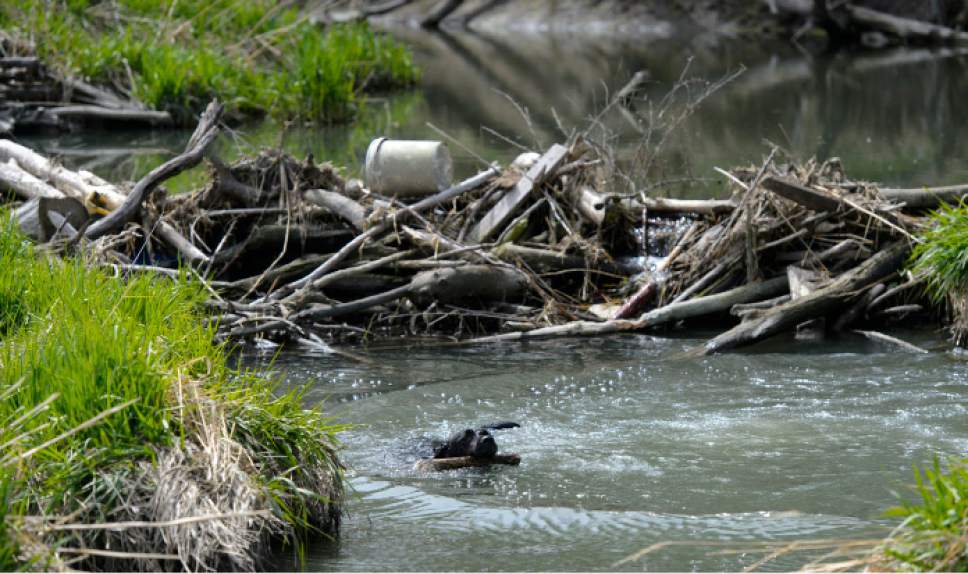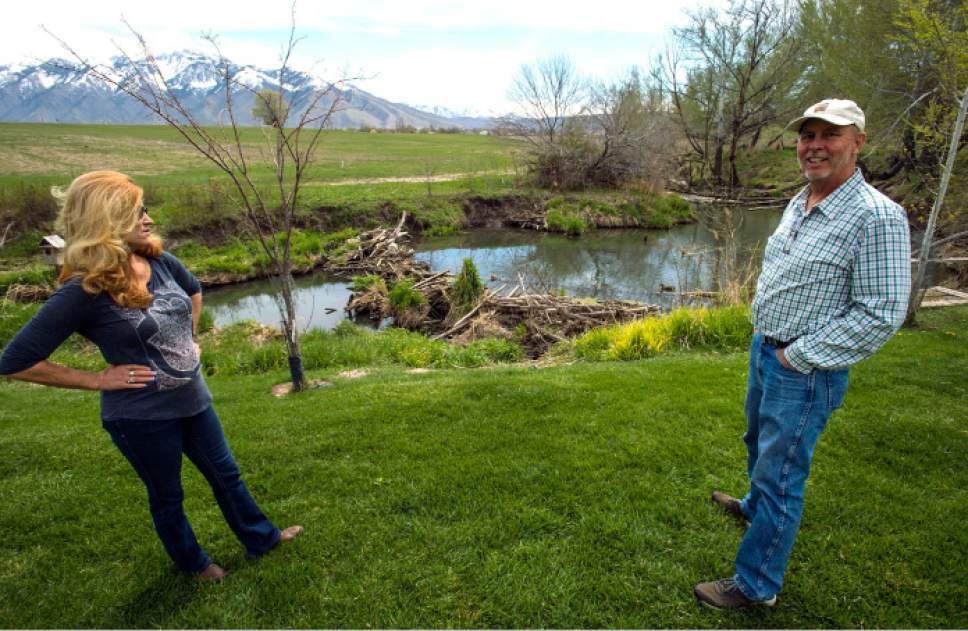This is an archived article that was published on sltrib.com in 2017, and information in the article may be outdated. It is provided only for personal research purposes and may not be reprinted.
Draper • Big Willow Creek bends and meanders behind Kelly McAdams' Draper home and her backyard steps down into an urban wildlife preserve.
Thanks to a string of beaver dams, the creek pools into wetlands teaming with life. Ducks and geese nest on the banks lined with cattails; herons and pelicans visit to dine on the 18-inch carp and catfish. Neighborhood kids also fish the ponds.
But where McAdams, his wife, Kris Burns, and neighbors on Dunning Court see an ecological sanctuary, Salt Lake County sees "unauthorized modifications to a countywide drainage facility."
The county Division of Flood Control has ordered them to remove the dams or face a $25-a-day fine, even though federal wildlife officials say these dams enhance the water quality, hydraulics and riparian habitat of an impaired segment of Big Willow Creek.
"The dams have been here for at least 20 years," said McAdams, who moved in five years ago. "It is unfair they are coming in and destroying the area when there are alternatives."
Along with neighbor David Dustin, McAdams is fighting the county's dam-removal order, saying it misapplies the county's flood-control ordinance by ignoring the proven benefits beaver dams provide and ways to reduce their risks.
But county officials say they have a legal obligation to keep waterways open and safe.
Should high water push the beavers' tangle of branches and creek debris downstream, the material could back up the creek onto someone else's property or obstruct culverts, and the county would be liable for the damage, according to Rick Graham, deputy county mayor for operations.
"The waterways and channels need to be clear and run and serve their purposes. There is a balancing act," Graham said. "The county has demonstrated many times it balances wildlife habitat on creeks and waterways as they run through the city."
Graham has overruled McAdams' appeal, which is slated to go before an administrative law judge on April 26.
Generations of Westerners have battled beavers because their dam-building clogs irrigation ditches and backs water into inconvenient places. The federal Wildlife Services, the animal-killing arm of the Department of Agriculture, kills about 22,000 beavers a year and many more nuisance beavers are relocated by states.
For land managers and ecologists, however, beavers are miracle workers when it comes to restoring damaged landscapes, and wildlife agencies encourage property owners to accommodate the animals whenever practical.
Beaver dams help control floods, slow water flows when they're high, connect water tables to floodplains and create wetlands and wildlife habitat, said conservation biologist Allison Jones.
"You have all these ecosystem services that keep the entire stream corridor functioning as it should," said Jones, with the Wild Utah Project. "Many other municipalities across the county are starting to allow beavers back to perform this critical engineering service."
McAdams, whose one-acre lot has s360 feet of creek frontage, agrees. Without the dams, the creek channel would narrow to about 2 feet and dry up in late summer, making it impossible for him to pump irrigation water when he needs it most.
"They want to take this wetland and turn it into a trench," McAdams said. "I'm afraid I might end up in jail over this."
On one dam he installed a flexible 10-inch pipe — a device known as a "beaver deceiver" — allowing water to pass through and help equalize levels on either side.
The county began raising concerns about the dams two years ago and homeowners above and below McAdams and Dustin have agreed to let the county pull them out by hand, according to Graham. He hopes to remove all Big Willow dams at the same time to minimize disturbance.
"There are other ways natural habitat can be maintained other than beaver dams and that can be architecturally engineered," Graham said. "Beaver is wildlife that operates on its own and it's hard to manage."
The county has offered to purchase and deliver $5,000 worth of large rocks that could be placed in the creek channel.
McAdams said he has too much invested in the ponds, which he feels enhance his property and the neighborhood.
The U.S. Fish and Wildlife Service has backed McAdams' cause, urging the county in a Sept. 9 letter to allow the dams to remain because they support and diversify stream and riparian habitat, slow water velocities and improve water quality.
The letter from Larry Crist, the Fish and Wildlife Service's Utah supervisor, also recommended enlarging the 11400 South culvert, which is undersized and filled with sediments, or install a grate to catch it.
Crist's letter failed to sway county officials, who hand delivered notices of violation to McAdams and Dustin on Christmas Eve. The notice alleged "fallen tree limbs and debris have been deposited in the form of a beaver dam," claiming the material restricts the flow, could cause flooding, alters creek alignment and erodes the banks.
They gave property owners 30 days to remove debris and "restore the creek bank to its original condition."
McAdams said he will never agree to removal.
"I may be on that dam," he said, "with my arms chained to the damn thing."
Brian Maffly covers public lands for The Salt Lake Tribune. Brian Maffly can be reached at bmaffly@sltrib.com or 801-257-8713.
Twitter: @brianmaffly

















